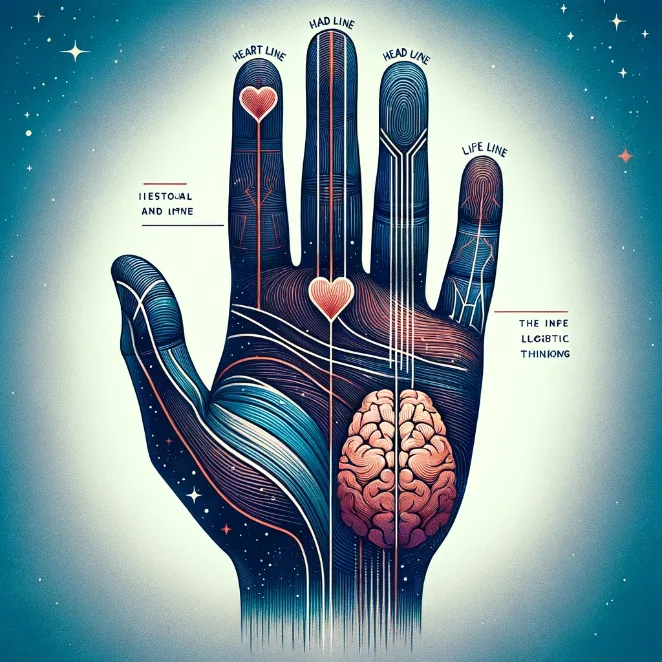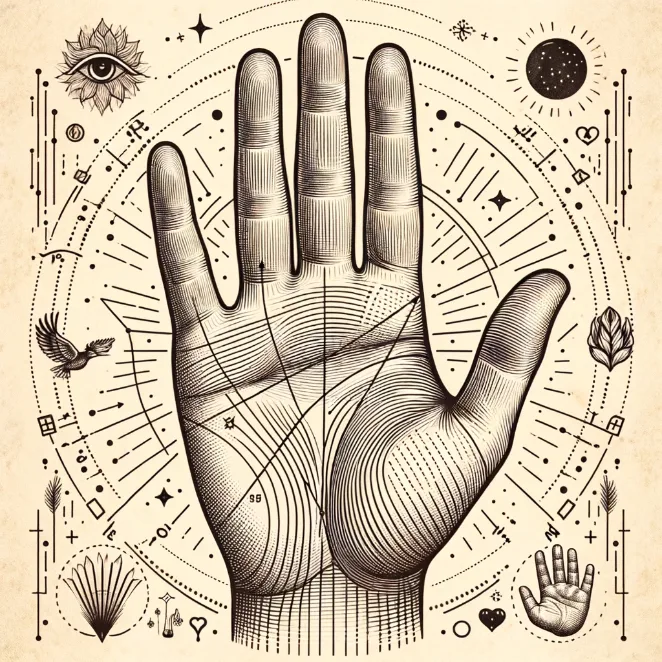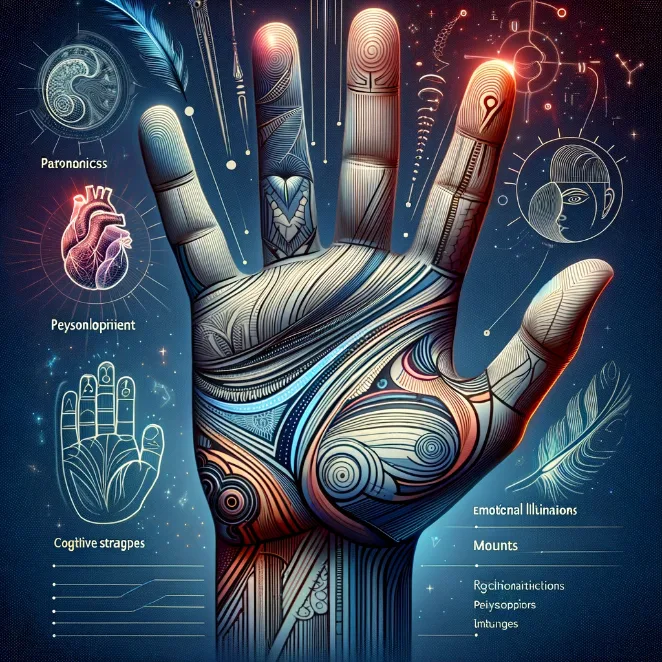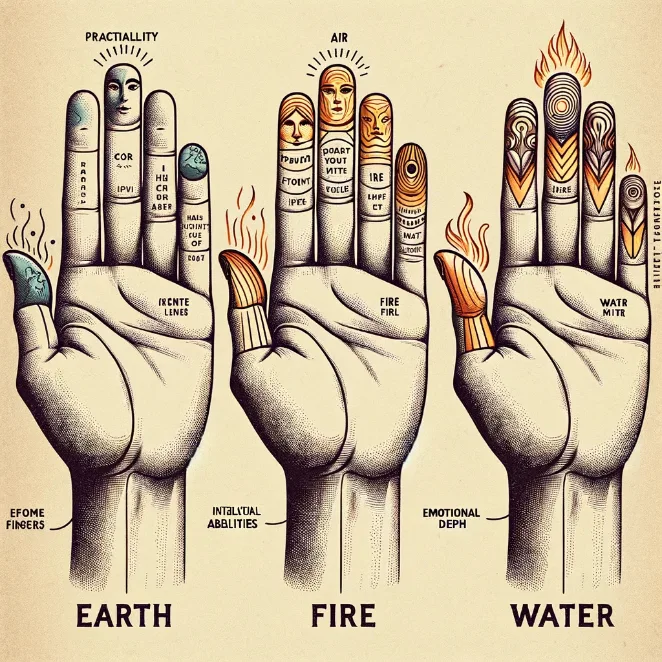
Palmistry: Unlocking The Secrets Of Psychological Traits
Palmistry, often referred to as chiromancy or palm reading, is an ancient practice that explores the lines, mounts, and shapes of the hand to gain insight into an individual's character and life experiences. While some may regard it as a mystical art, palmistry has intrigued and fascinated people across cultures for centuries. In this article, we will delve into the world of palmistry, focusing on how it can reveal psychological traits, shed light on personality characteristics, and provide a deeper understanding of ourselves and others.
article by Nora Pennington
The Language of the Hands: A Brief Introduction
Before we explore the psychological insights offered by palmistry, it's essential to understand the basic principles of this ancient practice. Palmists examine the palm's lines, mounts, and finger shapes to uncover valuable information about a person's life path, temperament, and emotional inclinations. Each hand is unique, and its features are believed to reflect an individual's inherent traits and potential.
The art of palmistry can be traced back thousands of years, with its roots in various ancient civilizations, including those of India, China, Greece, and Egypt. Throughout history, palmistry has been embraced for its capacity to provide guidance and self-awareness.

Lines of Influence: Understanding Personality Traits
One of the most recognizable aspects of palmistry is the examination of the lines on the palm, particularly the heart line, head line, and life line. The heart line represents emotions and relationships, offering insights into one's capacity for love and empathy. A heart line that curves upward may indicate a warm and affectionate nature, while a straighter heart line may suggest a more reserved or pragmatic approach to emotions.
The head line signifies intellect and decision-making abilities, providing clues about a person's cognitive strengths and thought processes. A long, deep head line may denote a logical and analytical mind, while a wavy or fragmented line could indicate a more creative and imaginative thinker.
The life line, despite popular misconceptions, doesn't predict lifespan but reveals a person's vitality and life journey. A deeply etched life line might indicate a strong life force and resilience, while a fainter line might suggest a more delicate constitution.

Analyzing these lines together can paint a more comprehensive picture of one's psychological makeup. For example, if the heart line and head line are closely aligned, it may indicate a harmonious balance between emotions and logic. Conversely, if they are widely spaced, it might signify a person who often grapples with inner conflicts between the heart and the mind.
Mounts of Power: Strengths and Weaknesses
In addition to lines, palmists study the mounts of the hand, which are elevated areas associated with different qualities and traits. For example, the Mount of Venus reflects one's sensuality and love for beauty, while the Mount of Mercury is linked to communication skills and adaptability. Each mount represents a particular set of psychological attributes, and their prominence or flatness can signify strengths and challenges in an individual's personality.
If the Mount of Venus is well-developed, it may suggest a person who appreciates and enjoys the pleasures of life, including art, music, and physical comforts. However, an overly pronounced Mount of Venus might indicate a tendency toward overindulgence or superficiality in matters of the heart.
Conversely, a strong Mount of Mercury can signify excellent communication skills and a natural aptitude for networking and negotiation. Individuals with such a mount may excel in professions that require effective verbal and written communication. However, an excessively prominent Mount of Mercury might suggest a person who is overly talkative or prone to manipulation through words.

Each mount has its unique significance, and palmists consider their size, shape, and positioning in their analyses. By examining the mounts in conjunction with the lines, a palmist can provide a more nuanced understanding of an individual's psychological traits.
Finger Shapes: A Window to Character
The shape and length of fingers also play a role in palmistry. Broadly speaking, fingers can be categorized into earth, air, fire, and water shapes, each corresponding to different personality traits. Earth fingers are practical and grounded, while air fingers indicate intellectual and communicative abilities. Fire fingers suggest passion and creativity, while water fingers symbolize emotional depth and intuition.
Earth fingers are typically shorter and squarer at the tips, reflecting a down-to-earth and pragmatic nature. Those with earth fingers tend to value stability and practicality in their approach to life:
- Air fingers are long and slender, reflecting a penchant for analytical thinking, communication, and adaptability. Individuals with air fingers are often drawn to intellectual pursuits and enjoy engaging in discussions and debates.
- Fire fingers are characterized by their long and pointed tips, symbolizing a passionate and creative disposition. Those with fire fingers are often driven by their desires and may excel in artistic or leadership roles.[
- Water fingers are long and slightly tapering, indicating emotional sensitivity and intuition. Individuals with water fingers are deeply attuned to their emotions and the emotions of others, making them empathetic and compassionate.

By analyzing finger shapes, palmists gain insights into an individual's psychological predispositions and inclinations. For example, someone with predominantly earth-shaped fingers might thrive in practical professions such as accounting or engineering, while a person with air-shaped fingers may excel in fields that require critical thinking and effective communication, such as journalism or teaching.
Embracing Self-Discovery: The Value of Palmistry
Palmistry offers a unique opportunity for self-discovery and personal growth. By exploring the psychological traits and characteristics revealed through palm reading, individuals can gain a deeper understanding of themselves. This self-awareness can be a powerful tool for personal development, helping individuals harness their strengths, address weaknesses, and navigate life's challenges more effectively.
Furthermore, palmistry can facilitate better self-acceptance by highlighting that there is no one-size-fits-all approach to personality. Each person's hand is a canvas of unique features and markings, reflecting a rich tapestry of experiences and potential. Embracing this diversity can foster a sense of self-compassion and appreciation for the intricacies of human nature.
Moreover, palmistry can be a valuable tool in interpersonal relationships. By gaining insights into the psychological traits of others, individuals can enhance their empathy and communication skills, leading to more profound and harmonious connections with friends, family members, and colleagues.
Palmistry as a Path to Self-Knowledge
While palmistry may not provide definitive answers to life's questions, it can serve as a fascinating and insightful tool for self-exploration. By examining the lines, mounts, and shapes of the hand, individuals can unlock the secrets of their psychological traits and gain a greater appreciation for the intricacies of human nature. Whether approached as a form of entertainment or a serious endeavor, palmistry invites us to delve into the rich tapestry of our inner selves, fostering a deeper connection with our own psyche.
Published: 12/1/2023
Modified: 12/1/2023
More predictions
Come back here soon to learn more about yourself and your future


Hand Textures: A Window To Your Characte
When it comes to palmistry, the analysis of hand textures holds a special place. The unique texture of your hands can reveal much about your character, personality traits, and even your life experiences. In this exploration of hand textures, we will delve into the various types and what they may signify.


The Mystical Cross Of Psychic Union
The Mystical Cross of Psychic Union, an ancient and enigmatic symbol, has captivated the curious and mystics alike for centuries. This sacred emblem represents the convergence of earthly and spiritual realms, offering a profound connection to the cosmos. In this article, we delve into the history, symbolism, and significance of the Mystical Cross, unveiling its role as a spiritual bridge and a source of profound inner transformation.


Palm Reading: Unlocking Your Career Path
Palmistry, the age-old practice of analyzing the lines, mounts, and shapes of the hand, offers a unique lens through which individuals can gain insights into their potential career paths. While it's essential to approach this exploration with an open mind and an understanding of its symbolic nature, palm reading can provide valuable guidance in understanding one's strengths, inclinations, and potential challenges when it comes to choosing a career. In this article, we will delve into the world of career path insights through palmistry.